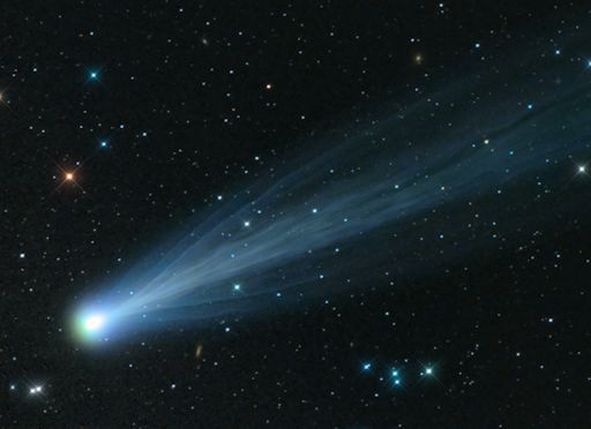The increase in brightness and emergence of multiple gaseous streamers could be caused by fresh veins of ice opening up in the comet's nucleus. Rapid vaporization of ice by solar heat is a sure-fire way to boost a comet's visibility. But, as NASA's Comet ISON Observing Campaign states, "we have no idea." The comet's nucleus is hidden from view by a hazy green atmosphere, so events in the interior remain a mystery.
"I have a strong suspicion that this is Comet LINEAR (C/1999 S4) all over again," says Mark Kidger of the ESA's European Space Astronomy Centre in Madrid. In the year 2000, Kidger other astronomers monitored Comet LINEAR as it disintegrated en route to the sun. "The sudden appearance of ISON's gas tail, the increasing fuzziness of its coma, and now this sudden outburst all remind me of C/1999 S4 just before it broke apart."
To reiterate: No one knows what is happening to Comet ISON. This could be the comet's death throes--or just the first of many brightening events the comet experiences as it plunges toward the sun for a close encounter on Thanksgiving Day (Nov. 28th).
Monitoring is encouraged. Comet ISON rises in the east just before the sun. Amateur astronomers, if you have a GOTO telescope, enter these coordinates. Dates of special interest include Nov. 17th and 18th when the comet will pass the bright star Spica, making ISON extra-easy to find. Sky maps: Nov. 16, 17, 18, 19. www.spaceweather.com

 RSS Feed
RSS Feed